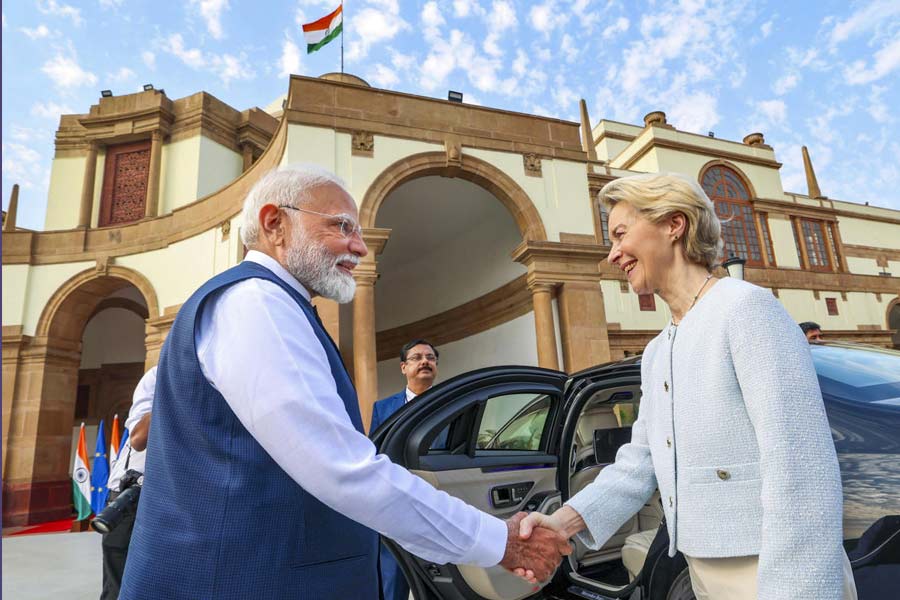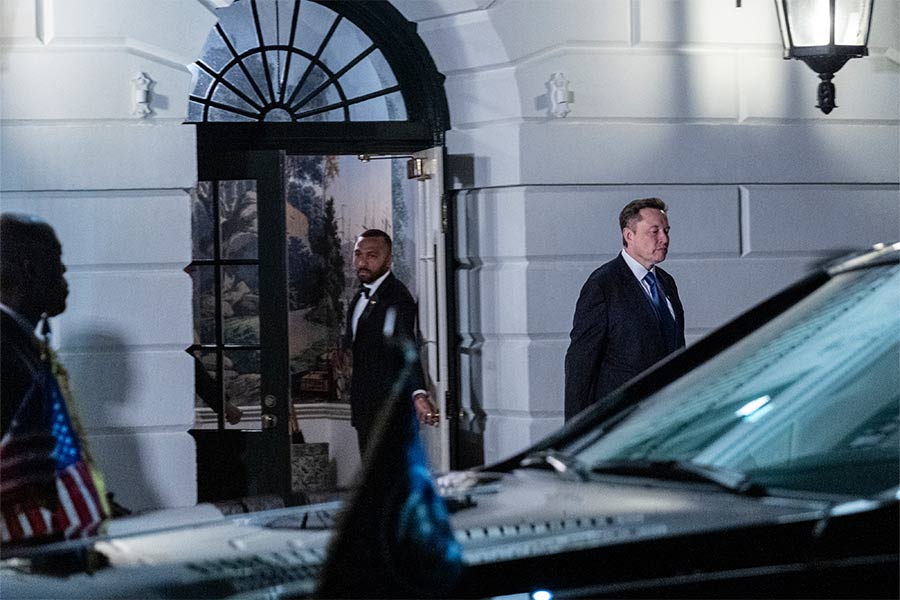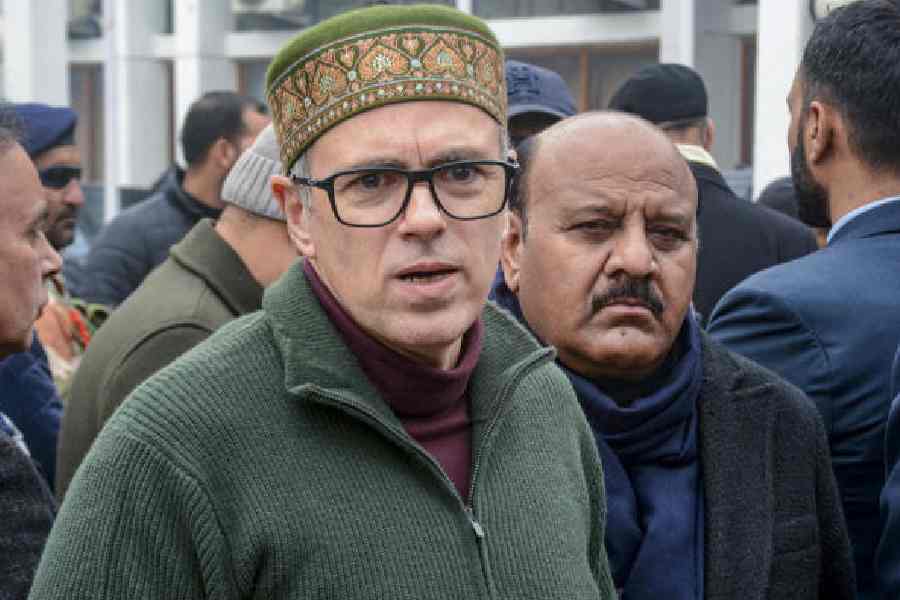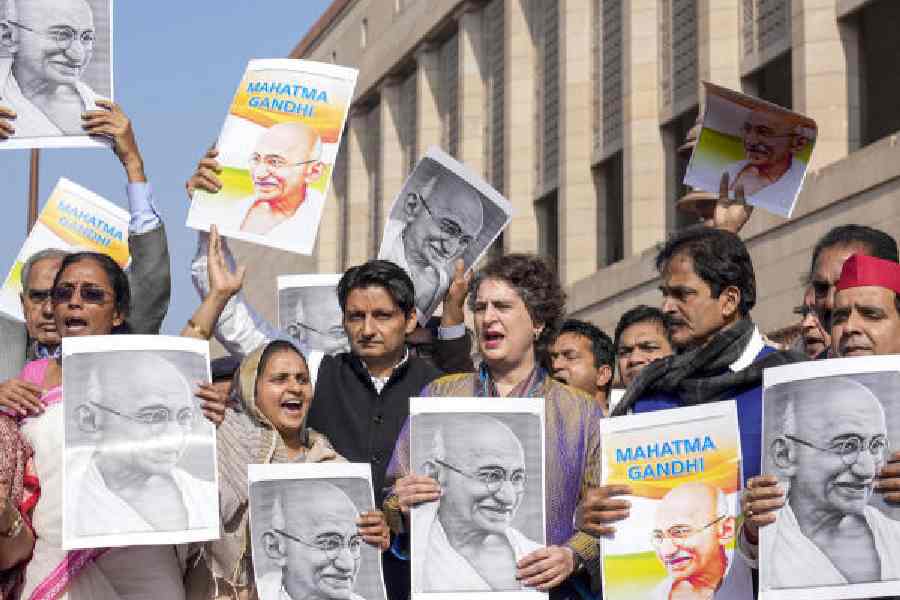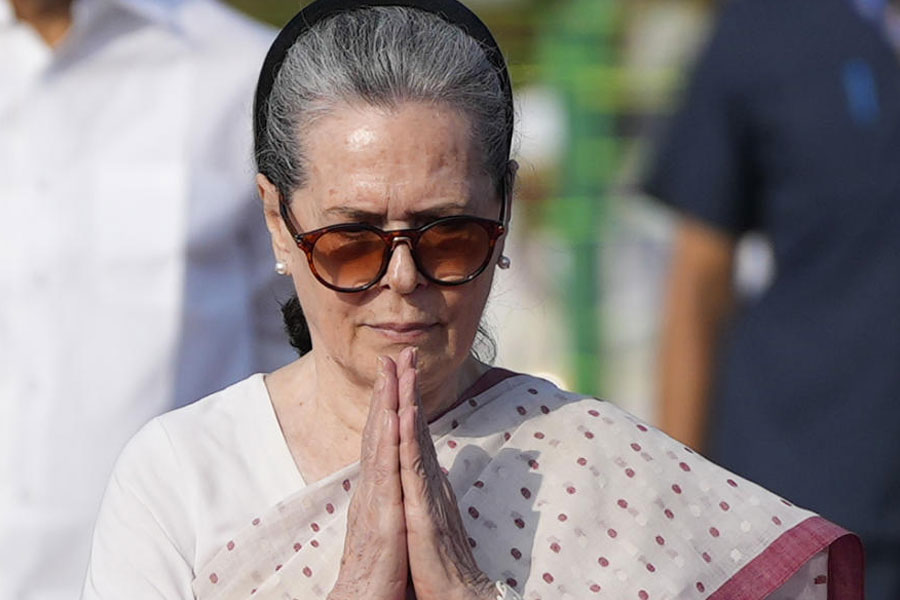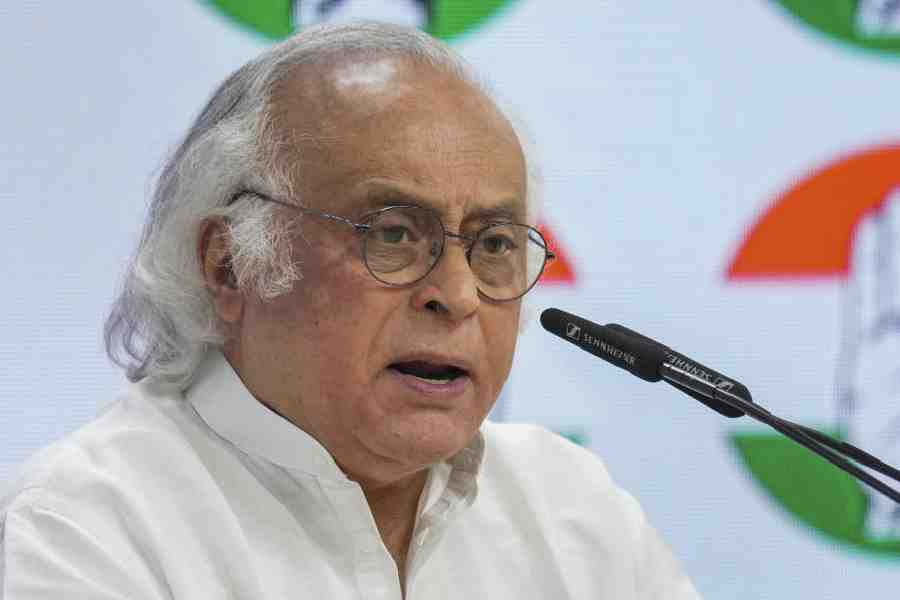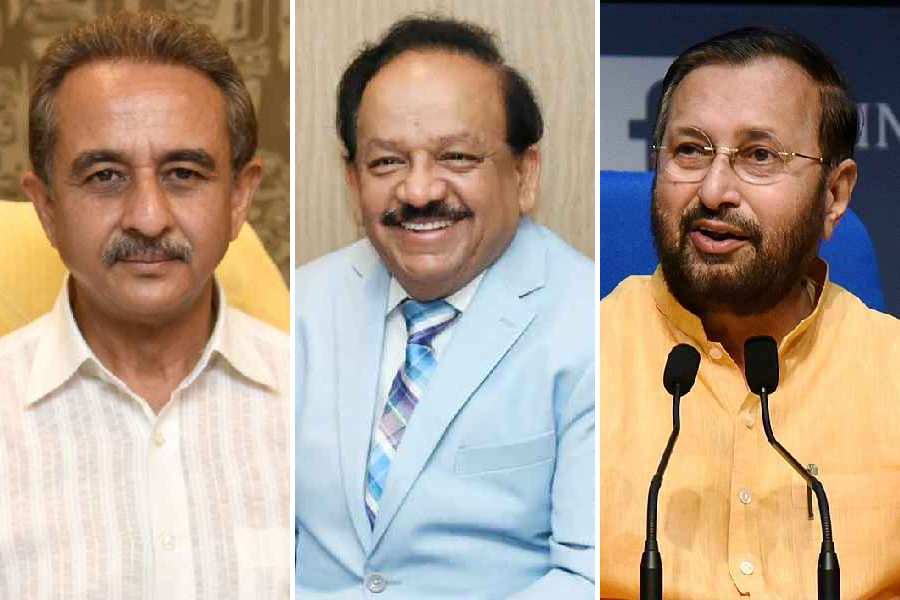India and the EU are gearing up for a pivotal round of free trade agreement (FTA) negotiations in Brussels on Monday, with both sides scrambling to minimise the fallout from Donald Trump’s aggressive push for tariff cuts.
India’s traditionally protected economy is now facing what could be its biggest trade shake-up in modern history, driven by mounting US pressure. Prime Minister Narendra Modi and European Commission President Ursula von der Leyen have vowed to conclude the FTA by year’s end, emphasising the EU’s role as a crucial economic counterweight to Washington’s demands.
European negotiators are urging India to lower tariffs on dairy products, wine, and automobiles. European winemakers want India’s hefty 150 per cent tariff on imported wines reduced to 30-40 per cent, while automakers like BMW and Mercedes-Benz are lobbying for fully built-up (CBU) vehicle duties to be slashed from 100-125 per cent to 10-20 per cent.
Meanwhile, Trump’s demands threaten to force a radical overhaul of India’s trade policy. The US President has repeatedly slammed India’s tariffs as "massive" and "unfair." Last week, Trump claimed India had "agreed" to slash its duties, suggesting that New Delhi had caved to Washington’s demands.
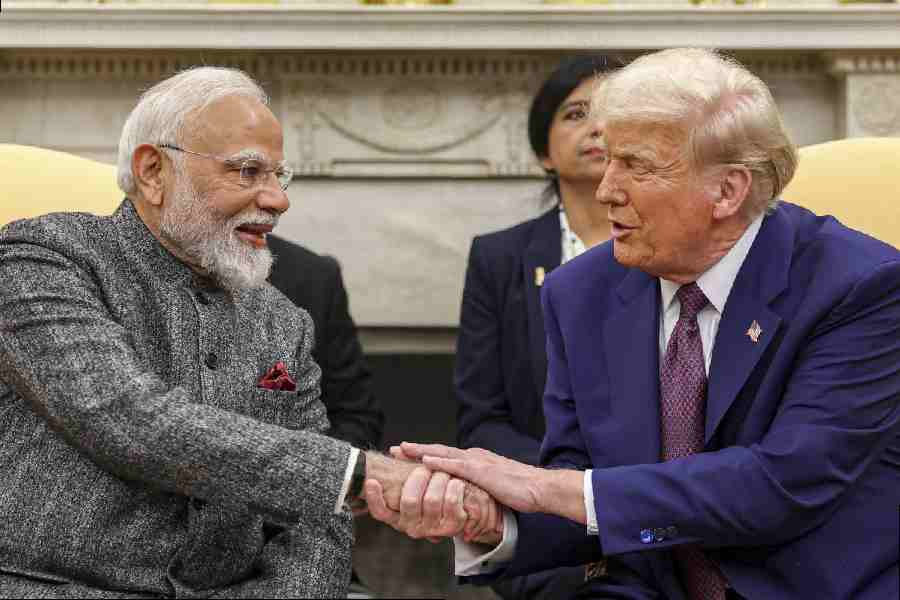
Prime Minister Narendra Modi with US President Donald Trump during a meeting at the White House, in Washington, DC, on February, 14, 2025. (PTI)
"They want to cut their tariffs way down now," Trump declared, setting an April 2 deadline for reciprocal tariffs on countries with "very unfair" levies on American goods. Trump has repeatedly criticised India's trade practices, branding the country the "tariff king."
The US wants India to reduce tariffs to zero or negligible levels in most sectors except agriculture. India’s average import tariff on US goods stands at about 12 per cent — far higher than the U.S. average of 2.2 per cent on Indian imports. Washington has also pushed for GST reductions on items it claims are unfairly taxed, such as medical devices and certain electronics.
Indian officials have responded with caution. Randhir Jaiswal, spokesperson for the ministry of external affairs, noted that commerce minister Piyush Goyal was in the US advancing discussions on a multi-sector bilateral trade pact aimed at easing tariff and non-tariff barriers. India’s broader goal is to deepen trade ties with the US while balancing domestic economic concerns.
"India must be strategic," said Rajiv Biswas, Asia-Pacific economist at IHS Markit. "Conceding too much to Trump’s demands could destabilise local industries, but outright defiance risks jeopardising vital trade links."
Officially, the two governments have agreed to negotiate the first stage of a multi-sector Bilateral Trade Agreement over the next seven to eight months, part of a drive to achieve mutual trade worth $500 billion by 2030.
US commerce secretary Howard Lutnick has outlined the broad aim: “It’s time to do something big, something grand, something that connects India and the United States together… on a broad scale, not product by product, but rather the whole thing.”
The government says its objective through the BTA (Bilateral Trade Agreement) is to “strengthen and deepen India-US two-way trade across the goods and services sector, increase market access, reduce tariff and non-tariff barriers, and deepen supply chain integration between the two countries.”
But India’s reliance on US trade gives Washington considerable leverage. The United States is India's largest export destination, accounting for nearly 18 per cent of total exports. If Trump imposes retaliatory tariffs or revokes more trade privileges, Indian exporters could face severe pressure.
Moreover, India's dependency on imported energy and technology -- both sectors in which US companies hold a dominant position -- curtails New Delhi's ability to push back forcefully. This economic imbalance makes India vulnerable to aggressive trade moves from Washington.
Key sectors such as pharmaceuticals, textiles, and IT services rely heavily on access to the American market. To counterbalance this reliance, India sees the EU talks as a chance to expand its trade options.
Adding to the complexity is Washington’s demand that India revise its Goods and Services Tax (GST) structure, which the US claims puts American exporters at a disadvantage. Finance minister Nirmala Sitharaman says the government is close to cutting GST, which Washington views as unfair taxation.
If India bows to Trump’s pressure and cuts tariffs significantly, several consequences are likely. India’s higher tariffs contribute substantial revenue to the government, and any meaningful reduction could shrink this income stream, potentially impacting social welfare programmes and public spending.
Lowering import duties could also expose Indian manufacturers to a surge of cheaper American goods, putting small and medium enterprises (SMEs) under intense pressure. Key domestic industries such as electronics, textiles, and agriculture are particularly vulnerable. Job losses could emerge in these sectors unless India simultaneously invests in skill development and targeted industry support.
Conversely, Indian consumers may enjoy lower prices on imported products such as electronics, luxury items, and high-end motorcycles.
If India refuses to budge, Trump could retaliate by imposing higher tariffs on Indian exports to the US, as he did during his earlier presidency when he revoked India’s preferential trade status under the Generalized System of Preferences (GSP). Such a move would make Indian exports like textiles, jewelry, and pharmaceuticals less competitive in the lucrative American market.
India may attempt to strike a delicate balance -- appeasing the US without compromising India’s economic stability. Analysts suggest India may adopt a sector-specific strategy, lowering tariffs in non-strategic industries while protecting key domestic markets.
Some suggest India may dangle defence purchases as a carrot to appease Washington, as the US is eager for India to pivot its arms buying away from Russia.
The disparity between US and Indian tariff structures has long been a source of tension. While the US maintains relatively low tariffs on most Indian goods, India's import duties are notably higher across several key sectors.
For instance, on agricultural products, India’s tariffs on items such as almonds, apples, and walnuts are significantly higher, often exceeding 30 per cent, aimed at shielding its small farmers. "The Indian agriculture market has to open up. It can't just stay closed," Lutnick says, calling the duties among the steepest globally.
India’s tariffs remain at 50 per cent for large American motorcycles, while US tariffs on Indian bikes are negligible. As for medical devices, India imposes tariffs of up to 7.5 per cent on imported devices, while the US rate is closer to zero.
What are India’s options? India is actively working to diversify its trade relationships, strengthening ties with the EU, Australia, and Southeast Asian nations to offset potential losses from reduced exports to the US
It could also offer incentives for local industry. To counter potential damage to Indian businesses, the government may introduce tax breaks, production incentives, and easier credit facilities to help domestic firms remain competitive despite reduced tariff protections. It could also push to strengthen supply chains and accelerate its "Make in India" initiative.
With India aiming to become a $5-trillion economy, the stakes are high. The government will need to strike a delicate balance -- satisfying the US without compromising India’s economic stability. For now, businesses in India are bracing for impact, knowing that Trump's demands could reshape the country's trade landscape.

